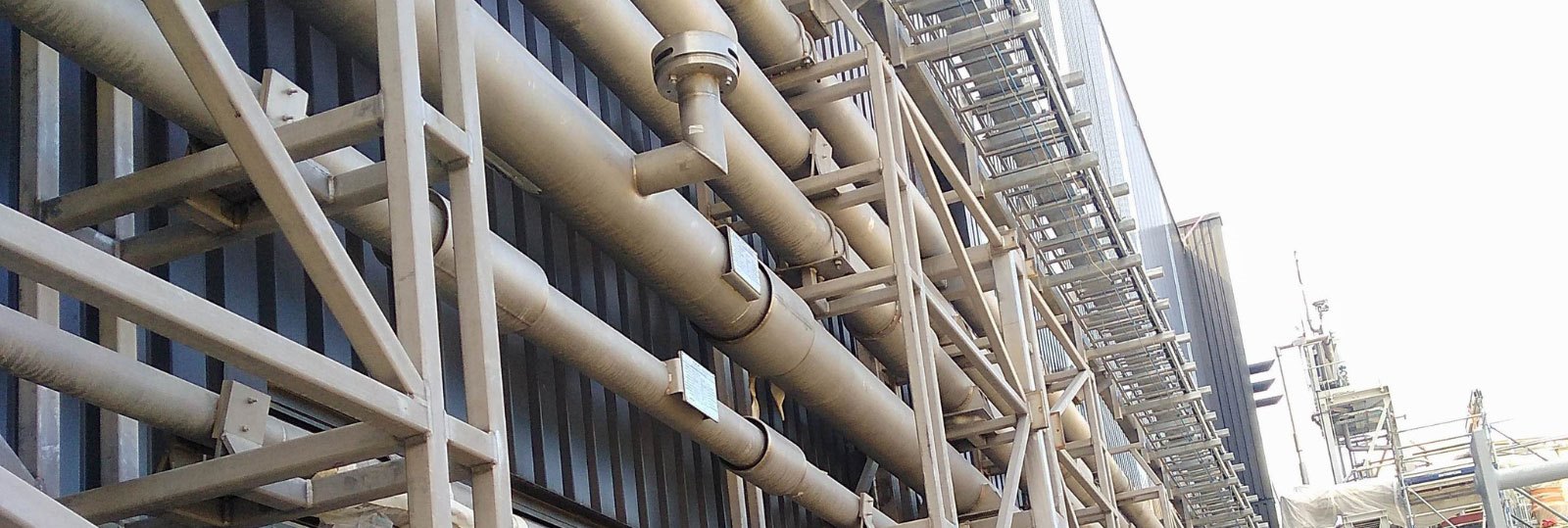In the industrial sector, efficiency and precision are essential for maintaining smooth operations, minimising costs, and ensuring safety. Among the various components that contribute to this efficiency, double-wall vacuum jacketed piping stands out as a game-changer. This advanced piping system is vital for industries that handle cryogenic liquids such as liquid nitrogen (LN2), liquid oxygen (LOx), and liquid helium (LHe). With its unique design and exceptional thermal insulation properties, double-wall vacuum jacketed piping has become the backbone of cryogenic fluid transfer systems in industrial plants.
What is Double Wall Vacuum Jacketed Piping?
At its core, double-wall vacuum jacketed piping consists of two concentric pipes. The inner pipe carries cryogenic liquids, while the outer pipe creates a vacuum-sealed space around the inner pipe. This vacuum layer acts as a thermal barrier, drastically reducing heat transfer through conduction, convection, and radiation. The inner pipe is often wrapped with layers of super-insulating materials to further enhance thermal efficiency. This design ensures that cryogenic liquids remain at their desired low temperatures during transport, preventing evaporation and maintaining product integrity.
Why is Double Wall Vacuum Jacketed Piping Important?
The importance of double-wall vacuum jacketed piping lies in its ability to address critical challenges in cryogenic fluid handling:
- Thermal Efficiency: The vacuum insulation minimises heat ingress, reducing the risk of cryogen evaporation. This ensures consistent delivery of liquid gases at the required temperature.
- Cost-Effectiveness: By preventing heat leaks and reducing energy losses, these systems save operational expenses over time despite their higher initial investment.
- Safety: Cryogenic fluids are highly sensitive to temperature changes. Without proper insulation, they can evaporate rapidly, creating pressure build-up or leaks. Vacuum jacketed systems mitigate these risks.
- Durability: These systems are designed for long-term use with minimal maintenance, making them reliable for industrial applications.
Applications in Industrial Plants
The versatility of double-wall vacuum jacketed piping makes it suitable for various industries:
- Cryogenic Applications: Industries such as aerospace, healthcare, and semiconductors rely on these systems to transport cryogenic liquids like LN2 or LOx safely and efficiently.
- Chilled Distribution Systems: Maintaining consistent temperatures is crucial in biomedical research and food processing industries. Vacuum jacketed piping ensures precise temperature control during storage and transport.
- Process Industries: From chemical manufacturing to pharmaceutical production, these pipes handle corrosive chemicals and other fluids while maintaining safety and efficiency.
Key Features of Double Wall Vacuum Jacketed Piping
Several features make double-wall vacuum jacketed piping stand out:
- Vacuum Insulation: The vacuum layer between the inner and outer pipes minimises heat transfer.
- Super Insulation Materials: Multiple layers of reflective shields and non-conductive spacers further reduce heat ingress.
- Bayonet Connections: These allow for easy installation and ensure a leak-proof system.
- Durability: High-quality materials like stainless steel provide resistance to corrosion and wear.
Role of Vacuum Cleaner Pipes in Maintenance
While not directly related to cryogenic fluid transport, vacuum cleaner pipes play a supporting role in maintaining the vacuum space within double-wall systems. These pipes are used during installation or maintenance to evacuate air from the annular space between the inner and outer pipes. Maintaining a high-quality vacuum is essential for optimal thermal insulation performance.
Advantages Over Traditional Piping Systems
Compared to conventional insulated piping systems, double-wall vacuum jacketed piping offers several advantages:
| Feature | Double Wall Vacuum Jacketed Piping | Traditional Insulated Piping |
| Thermal Efficiency | Superior insulation; minimal heat loss | Moderate insulation; higher heat loss |
| Maintenance | Minimal; long lifespan | Frequent; prone to degradation |
| Cost | Higher initial cost; long-term savings | Lower initial cost; higher operational costs |
| Safety | High safety standards | Moderate safety standards |
Challenges and Considerations
While the benefits are significant, there are certain challenges associated with using double-wall vacuum jacketed piping, including:
- Higher Initial Costs: The advanced design and materials make these systems more expensive upfront.
- Complex Installation: Proper installation requires skilled personnel to maintain the integrity of the vacuum space.
- Customisation Needs: Each system must be tailored to specific industrial requirements.
Conclusion
Double-wall vacuum jacketed piping is vital in industrial plants for efficiently transporting cryogenic fluids while ensuring safety. Although it involves higher initial costs than traditional systems, the long-term savings, reliability, and performance make it a worthwhile investment.
These systems have revolutionised cryogenic fluid management, enabling precise temperature controls in biomedical research and efficient cooling in semiconductor manufacturing. With modern advancements, they are now easier to install and maintain.
For industries focused on optimising operations while prioritising safety, investing in high-quality double-walled vacuum-jacketed piping is a smart choice.

